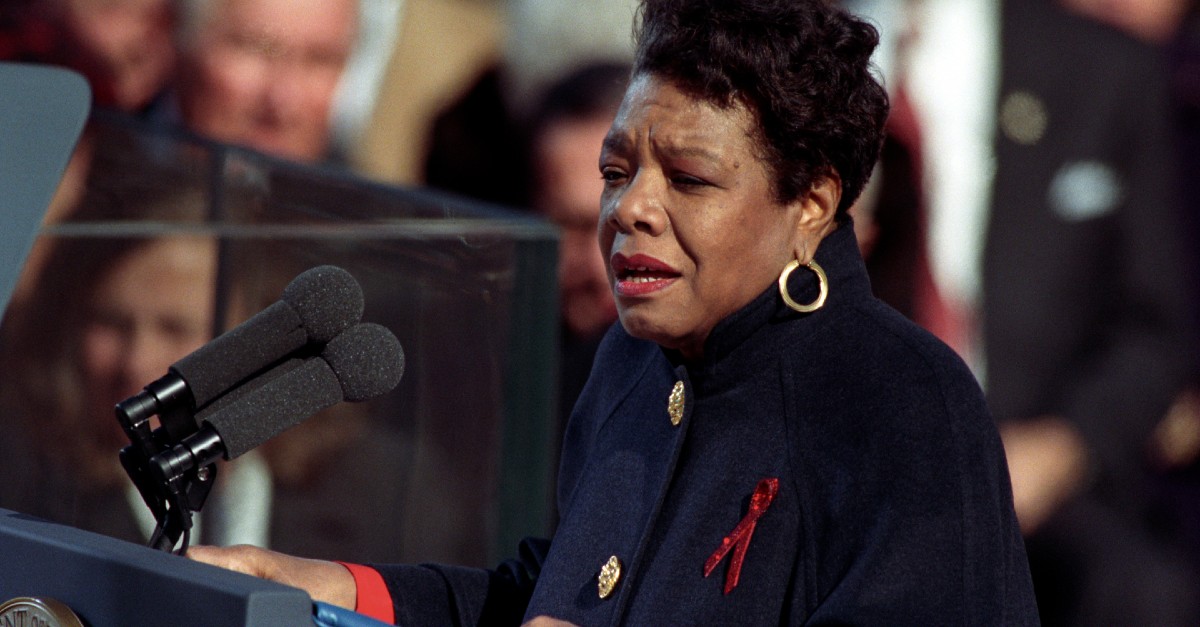One of my favorite poems is, Still I Rise by Maya Angelou.
“You may write me down in history
With your bitter, twisted lies,
You may trod me in the very dirt
But still, like dust, I’ll rise.”
With these opening words, Angelou manages to convey an entire world of meaning and emotion. There’s her themes of liberation and survival against oppression. There’s her message of self-empowerment and her determination to write her own place in history. Most of all, the words fill readers with a sense of promise. This is someone who has tasted bitterness and cruelty, yet still overcame them.
Angelou’s words continue to unfold when you learn more about her own personal history. As a child, she was sent to live with her grandmother in rural Stamps, Arkansas. Her autobiography, I Know Why the Caged Bird Sings, details how her early years were overshadowed by racism and prejudice. One painful story reveals how a young Maya and her grandmother were turned away by a white dentist, despite the man owing them money. In a way, Angelou’s poetry does more than just inspire readers, it also gives them a glimpse into the past through the eyes of a young girl.
The Poetry of Pros
As luck would have it; March happens to be both Women’s History Month and National Reading Month. This presents educators with a unique opportunity. By integrating the poetry of women like Phillis Wheatley or Emily Dickinson into our lessons, we can engage our students on multiple subjects. As Kasey Short of Edutopia writes,
“Poetry by females gives a unique lens for examining history through women’s voices and perspectives. Women saw the events around them, and they felt the impact of the decisions made by those in power. At times, they had influence over the men in their lives. Reading poetry by female authors can give students new insight into historical events.”
It doesn’t end there, however. Not only would poetry improve student literacy and history, but it could also be used in discussions of math, public issues, and social-emotional learning. All we have to do is seize the moment.
Sublime Strategies
Here a just a few ideas to help your class get started:
- Retelling Herstory: Have students select a poem from a famous female poet and read it aloud. Then, work with your class to learn more about her life and history. What experiences do you they think affected her writing? Why do they think that?
- Exploring Emotions: Choose another poet and consider what emotions she was trying to capture in her poems. Encourage students to think of an experience they had which brought on similar emotions. Once they have an idea, consider having them draft their own poems about the experience.
- Lyrical Equations: Introduce your students to poets who specialized in Haiku, such as Fukuda Chiyo-ni. Reveal to them that Haiku is a style of poetry that uses patterns and numbered syllables. Have them try their hand at writing haiku, then consider what other subjects depend on patterns and specific numbers!
- Write Words: Choosing the right word is an important part of being a poet. Have students read through different poems and mark out any words they don’t know or understand. What do these words mean, and why did the author use them? For fun, consider replacing some of the author’s words with modern ones the students enjoy using!
Turning the Page
By incorporating poetry written by women into our lesson plans, we not only honor the many amazing women who made history, we also give students the vocabulary to expand their learning. Poetry can give them a new perspective on the world around them and allows them to examine the emotions and experiences of others. If we light the spark of their imagination, who know what other passions will catch fire?
We hope you are all staying healthy and safe during this difficult time. For more free educational resources simply follow this link. If you enjoyed this blog post, don’t forget to subscribe!
*Image courtesy of wikimedia commons.

